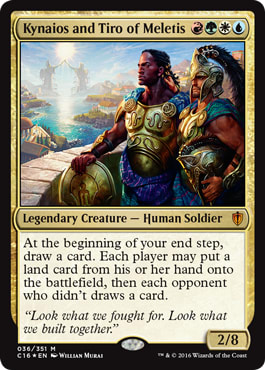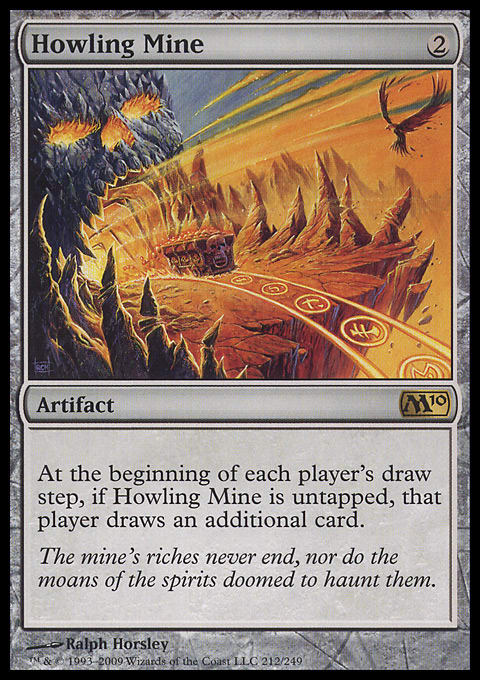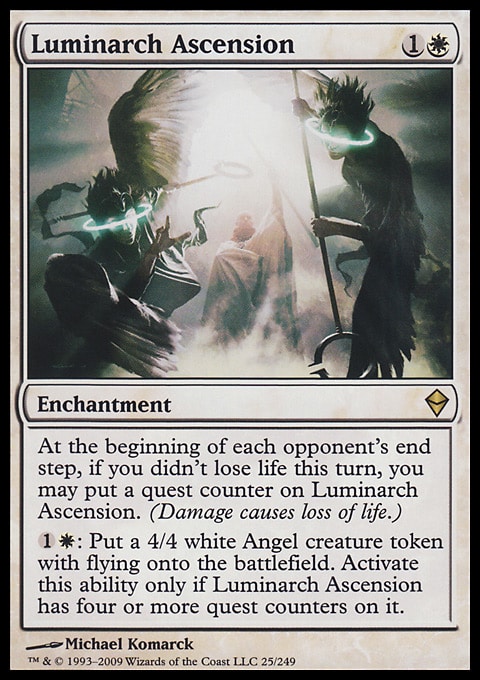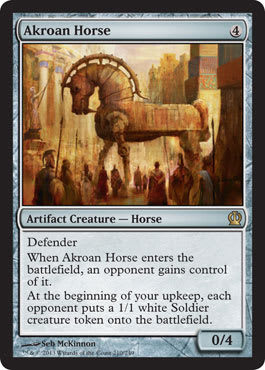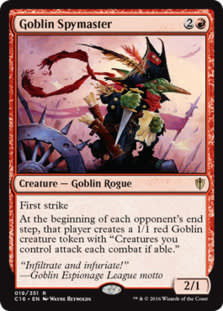Imagine, if you will, the following scenario. You go to your local game store, looking for some people to play Commander with. You join up with some of your friends and you’re looking for a 4th player. A player sits down at the table wearing the comfiest looking sweater you can imagine, a real Mr. Rogers vibe. They take out their playmat and deck. Their playmat has a picture of a kitten on it and their sleeves are emblazoned with “Free Hugs”. Love it or hate it, chances are you’re about to play against a Group Hug deck. (Note: I like imagining my fictional Group Hug player as Mr. Rogers. Mileage may vary depending on how you feel about Group Hug).
What exactly is Group Hug, though? Depending on who you ask, Group Hug could mean any number of things. To one player, Group Hug is about giving away as many free things as possible, accelerating the game state and enabling insane early wins they’ll tell stories about for weeks to come. To another, it’s about policing the board state, keeping everyone on an even playing field and punishing anyone who tries to get too far ahead. Some players just like to dole out favors from behind a pillow fort of protective enchantments, hoping they’ll be left alone long enough to secure victory.
The cool thing about Group Hug, at least in my opinion, is that none of those people are necessarily wrong or right. Group Hug decks can do some or all of those things, and whether or not a particular take on the strategy is valid is something the deck’s pilot and playgroup have to decide. I hesitate to provide a blanket statement on what Group Hug is supposed to be, because the strategy feels more like a mindset than a defined archetype. What I can do, however, is try and explain how I approach building a Group Hug deck. So let’s get started!
First things first, who do we pick as our Group Hug Ambassador? Our Secretary of Embrace? One of the more recent group hug generals to hit the scene is Selvala, Explorer Returned. She draws everyone cards, ramps us, slices, dices, and makes great fries! Selvala is definitely a good option if we’re looking for a clean 2-color Group Hug experience, though I find the lack of Blue to be a little discouraging.

For those of us who prefer a little more Blue in our Group Hug, we’ve got the original happy, purple hippo himself, Phelddagrif. If you’ve ever wished your general could dole out tiny favors to those who have pleased you, then Phelddagrif is the hippo for you!
But, what if we want to give our allies more substantial gifts, while reserving the right to make dissenters rue the day they ever crossed us? Luckily for us, we have the benevolent and vengeful power of the original Goat Mom on our side, Zedruu the Greathearted. Sorry, Toriel. Zedruu was doing the whole Goat Mom thing way before Undertale came about. In fact, I’m not entirely convinced Toby Fox didn’t base Toriel off of Zedruu in the first place. I’m on to you, Toby Fox. I see your Goat Mom and raise you a Sakashima the Impostor!
Either way, Zedruu remains one of the most tempting group hug generals in my eyes, if only because she gives us access to a color that not many other group hug aligned legendary creatures give us access to. Red. We do lose out on Green, though, which means our mana is going to take a consistency hit. The absence of Green tends to have that effect on mana bases. If only there was a legendary creature that gave us access to all the colors we could possibly want . . .
Wait a second…What’s that on the horizon?
Imagine, in this scenario, that the Krabby Patty was actually these guys.
BAM! Here we have the card that can make all of your group hug dreams come true. Look at those big, strong arms! Those arms are primed for hugging! And if you don’t think these guys would give you the biggest hug you’ve ever received in your life, then I would like to direct your attention to Tiro gently running his hand through Kynaios’s hair. If you can’t imagine these two re-enacting the pottery scene from Ghost, then what are you doing? That is totally something they would do.
These beautiful, strong gay men of color are everything I want in a group hug general. I could sit here and talk forever about how great it is this card exists, and how much it means to me personally to see representation like this on the front of a retail package that will appear in stores all over the world. I could, but that kind of thing really deserves its own article. I’ll sum up my feelings about this by saying that this is a great thing, and even if it doesn’t mean anything to you personally, it’s huge for the lgbtq+ community.
Moving on from that group hug to the group hug we’re here to discuss, let’s talk about why Kynaios and Tiro are my ideal choice for a group hug commander. There are three general qualities that set Kynaios and Tiro apart as a my choice: They draw everyone cards, they protect you, and they give people the opportunity to advance their board state in exchange for the extra card. They aren’t very threatening in and of themselves, and they do good things for you and your opponents, and I think that’s key when looking for a good Group Hug Commander.
With that covered, let’s look at how those qualities translate to the rest of the deck. But first, the decklist!
Hug it Out ? Commander | Robert Burrows
- Commander (1)
- 1 Kynaios and Tiro of Meletis
- Creatures (18)
- 1 Akroan Horse
- 1 Blazing Archon
- 1 Chasm Skulker
- 1 Djinn of Infinite Deceits
- 1 Edric, Spymaster of Trest
- 1 Goblin Spymaster
- 1 Gwafa Hazid, Profiteer
- 1 Humble Defector
- 1 Hushwing Gryff
- 1 Kazuul, Tyrant of the Cliffs
- 1 Orzhov Advokist
- 1 Phelddagrif
- 1 Progenitor Mimic
- 1 Psychosis Crawler
- 1 Selfless Squire
- 1 Selvala, Explorer Returned
- 1 Windborn Muse
- 1 Zedruu the Greathearted
- Spells (41)
- 1 Arachnogenesis
- 1 Arcane Denial
- 1 Beast Within
- 1 Chaos Warp
- 1 Comeuppance
- 1 Dream Fracture
- 1 Insidious Will
- 1 Oblation
- 1 Reins of Power
- 1 Swan Song
- 1 Swords to Plowshares
- 1 Sylvan Reclamation
- 1 Austere Command
- 1 Blasphemous Act
- 1 Collective Voyage
- 1 Cultivate
- 1 Kodama's Reach
- 1 Migratory Route
- 1 Tempt with Discovery
- 1 Treacherous Terrain
- 1 Dictate of Kruphix
- 1 Fevered Visions
- 1 Ghostly Prison
- 1 Luminarch Ascension
- 1 Lurking Predators
- 1 Oath of Druids
- 1 Propaganda
- 1 Rites of Flourishing
- 1 Sphere of Safety
- 1 Hoofprints of the Stag
- 1 Assault Suit
- 1 Chromatic Lantern
- 1 Coalition Relic
- 1 Darksteel Ingot
- 1 Font of Mythos
- 1 Gate to the AEther
- 1 Howling Mine
- 1 Prismatic Geoscope
- 1 Sol Ring
- 1 Temple Bell
- 1 Venser's Journal
- Lands (40)
- 5 Forest
- 5 Island
- 5 Mountain
- 5 Plains
- 1 Ash Barrens
- 1 Breeding Pool
- 1 Command Tower
- 1 Exotic Orchard
- 1 Flooded Strand
- 1 Forbidden Orchard
- 1 Frontier Bivouac
- 1 Hallowed Fountain
- 1 Homeward Path
- 1 Jungle Shrine
- 1 Mana Confluence
- 1 Mystic Monastery
- 1 Reflecting Pool
- 1 Sacred Foundry
- 1 Seaside Citadel
- 1 Steam Vents
- 1 Stomping Ground
- 1 Temple Garden
- 1 Windswept Heath
- 1 Wooded Foothills
Drawing Cards
One of the hallmarks of Group Hug as a strategy is symmetrical card draw. What I mean when I say symmetrical is that we want to let everybody draw cards, not just us. While this is pretty counterintuitive to how most of us play Magic, the Group Hug mentality does not really ascribe to normal play patterns.
The most common way to include symmetrical card draw is through what we call a Howling Mine effect, so called because of this little beauty right here:
The number of Howling Mine variants has only increased over time, which means we have a figurative cornucopia of cards to choose from when we’re looking to fulfill our need to let everyone draw cards. I will point out that I include cards like Temple Bell, Jace Beleren, and Prosperity in this category even though they aren’t specifically Howling Mine variants. Symmetrical card draw comes in many forms, and these cards are usually pretty good options if you’re looking for some variety. Having access to four colors means we get access to almost any symmetrical card draw we want, minus some of the more painful options available to the Nekusar, the Mindrazer players (but that’s another article entirely).
There are a couple of options I consider auto-includes, such as Howling Mine, Font of Mythos, Temple Bell, and Dictate of Kruphix. Selvala, Explorer Returned is a card I’m happy to include because it’s ramp, life-gain, and a symmetrical draw effect all in one card. Giving your opponents free cards tends to take the sting out of the extra mana you’re generating. Then we have Rites of Flourishing. Much like Kynaios and Tiro themselves, Rites of Flourishing gives your opponents more than just extra cards. The opportunity to play extra lands is sure to progress the game state quickly for everyone. Then we have two cards that kind of lead into other topics of conversation: Fevered Visions and Edric, Spymaster of Trest.
This is a forking path, but it all comes together in the end, so I’ll talk about Edric and how we protect ourselves then move on to Fevered Visions and talk about how we can actually win the game.
Construct the Pillow Fort
One of the things that is critical for a Group Hug deck to perform its role well is the ability to protect itself. As a rule, Group Hug usually doesn’t do this with big, intimidating threats. Threats draw attention to ourselves and provoke action against us. No, we want to want to keep our opponents from attacking us by convincing them it’s better not to. There are a couple of ways to do this, and one of the most tried and true is the Propaganda effect:
Nothing says don’t attack me like making it costly to do so. One of the benefits of being able to run Red, White, and Blue is that we gain access to the best Propaganda effects the game has to offer. Propaganda, Ghostly Prison, Windborn Muse, Sphere of Safety, and Kazuul, Tyrant of the Cliffs. Unless you’ve got some big spenders at the table, no one will probably bother with attacking you for such a cost when they could develop their board instead.
Another way to incentivize your opponents to turn their aggression elsewhere is to reward them for doing so. This is where Edric, Spymaster of Trest comes in. Giving your opponents cards for attacking people besides you is a good way to make friends. Likewise, Orzhov Advokist gives your opponents the option to boost their creatures in exchange for a turn of amnesty. Or, you could just outright tell your opponents they can’t attack you with Blazing Archon or be more selective in neutralizing threats with Gwafa Hazid, Profiteer.
As a last ditch effort, having access to an emergency escape button is definitely an option we want to have. There have been some powerful Fog effects printed over the last few years, some of which may just win you the game if used at the right time. My choices are Arachnogenesis, Comeuppance, and Selfless Squire. These cards are more than just Fog effects, Arachnogenesis being both a form of protection and a legitimate win condition in some scenarios. Likewise, Selfless Squire can leave you with quite the beater after keeping you alive. Which leads into our next topic of conversation: Win Conditions.
So, How Do I Win?
One of the things I struggle the most with when building Group Hug is deciding how many and what types of win conditions to include. I’m of the opinion that even Group Hug decks should have a way to close out the game should it come down to it, and there are a few types of win conditions I’m looking to include. Remember when I brought up Fevered Visions before? Well, Fevered Visions is pretty indicative of one of the more innocuous win conditions in Group Hug decks. Fevered Visions pulls double duty as a Howling Mine and it can do some serious damage over time to your opponents when you’re constantly trying to keep their hands full of cards. But one such effect won’t be enough to close the game out on its own. We need more DOTs! Psychosis Crawler is a good companion to Fevered Visions in terms of pinging your opponents to death over a long period of time. It doesn’t do it quite as efficiently as it would in Nekusar, the Mindrazer, but that deck is a different animal entirely.
Hoofprints of the Stag and Luminarch Ascension are honestly perfect win conditions for a Group Hug deck. If things are going according to plan, you’ll be pretty hard to straight up attack. This means you’ll have plenty of time to make use of massive flyers these two enchantments will pump out. Then we have Reins of Power. This is a bit of a wild card in terms of whether or not it’ll win you the game. If you’re playing against an opponent with a huge army that just can’t break through your pillow fort, chances are the same can’t be said for them if you happened to gain control of that army. There are also times where it won’t do much of anything because your opponents don’t really rely on creatures to get the job done. I still think it’s worth including, though, because it can just be a huge blowout in the later stages in the game.
Treacherous Terrain can just straight up win if the game goes long enough, and it has the benefit of being useful in the early game due to basic landcycling.
There are few other options I’m including in the deck that can just win through straight up combat damage. Blazing Archon pulls double duty as protection and a giant, flying beat-stick. Phelddagrif gives out presents, but he can still give himself trample and flying to get in for some beats. There aren’t a lot of overt win conditions in the deck, but you’ll find you often won’t have to kill all of your opponents. If you can cobble together a victory against whoever is left standing after the dust is settled then I think you deserve to win. The trouble is getting to that point. While your protective measures may prove to be enough to deter opponents from targeting you, there’s another way to incentivize pacts of non-violence.
I Got Something For You
Am I suggesting you bribe your opponents with free stuff to leave you alone? Yes. Yes I am. A present can mean the difference between your opponent being willing to pay that 3 or 4 extra mana to smack you with their suited up Voltron Commander, and not. Zedruu the Greathearted is the patron saint of giving people free stuff, so she goes straight in to the deck. A lot of decks built around Zedruu will often give away things people don’t really want, but this deck is all about rewarding those who work with us. We can give away some of the tokens we make from Hoofprints or protect and ally by giving them the Blazing Archon. I feel like it’s better to enable our allies than punish our enemies, though that might change after I’ve run this deck a few times. Sometimes people need tough love when they’re being bad, and Zedruu isn’t afraid to get tough.
Akroan Horse and Goblin Spymaster are the kings of building up small armies for your opponents. Akroan Horse lets you exclude someone who isn’t playing nice with the rest of the table while rewarding everyone else. Goblin Spymaster is a little more insidious in that it forces your opponents to attack if their Goblin tokens stick around. However, if your shields are up, Spymaster is an excellent way to get your opponents to fight each other instead of you. Fueling the wars between opponents with extra cards and other free stuff can be pretty rewarding in and of itself.
Oath of Druids doesn’t give you direct control over giving people free things, but it will help the people who are behind on board to catch up. I can imagine some pretty exciting moments happening when people flip for Oath of Druids, and that alone makes it worth including in my book. Same goes for Gate to the Aether. I can’t wait to see what happens with these cards in play.
There’s also the option of giving people some free lands to ramp them up a little. Kynaios and Tiro give everyone the option to ramp already, but including something like Collective Voyage and Tempt with Discovery will do a lot to advance the game and get people making cool plays much earlier.
But with all of the cool things that are bound to be occurring with all the extra mana and cards, the Group Hug deck does need access to some answers.
Questions Have Answers
Like any other Commander deck, the Group Hug deck wants to have ways to interact with other peoples’ game plans. However, we don’t have to pack answers that’ll leave all of our opponents frustrated with us. What do I mean by that? Let’s take a look at some of the answers I’m including in my list.
The thing about all of these removal spells is that they leave something behind for their target. It softens the blow a bit to leave them with something, and in the case of Oblation and Chaos Warp it could be substantially better depending on the luck of the draw.
But what about board wipes? Wrath effects are kind of a format staple in Commander and there are some really powerful board wipes out there. I do think Group Hug needs to include some board wipes, and there are a few options I think exemplify the Group Hug mindset. Austere Command is probably the most Group Hug of Wrath effects because of how modular it is. You can spare the bulk of one opponent’s forces while decimating the board of someone who has gotten too far ahead. The sheer number of choices the card offers means it can do whatever you need it to do at the time, and that gives you options to manipulate the board state to something that benefits the people who have fallen behind. Blasphemous Act is usually just a straight up board wipe, but I think we need to have at least one of those. Blasphemous Act does leave room for things to survive, even if it isn’t likely. 13 damage is a hell of a lot of damage.
Now comes the question of whether or not we run counterspells. I am on the side of running counterspells in our Group Hug deck, if only because it gives us the option to shape the game state in ways that removal just can’t. However, I will be very selective about what counterspells to include. My choices are Arcane Denial, Dream Fracture, Swan Song, and Insidious Will. Arcane Denial and Dream Fracture replace the card that they counter, so they play a similar role to Chaos Warp and Oblation. Swan Song is narrow, but it’s efficient and leaves the opponent with a creature, a la Beast Within. Insidious Will is the odd one out here, but my reason for including it is sheer flexibility. The way I intend to play this card will have it being a Twincast or Redirect more often than a Counterspell, but it’s nice to have the option if it’s necessary.
Cards Sleeved, Deck Out
Alright, that about covers most of it. The mana base and other forms of fixing are pretty standard, but feel free to adjust based on your preferences. I’ll probably make some changes once I’ve had the chance to test the deck out, so take it for what it is, a rough draft.
I hope you’ve enjoyed this little excursion into the world of Group Hug. Now, get out there and figuratively hug your opponents!














